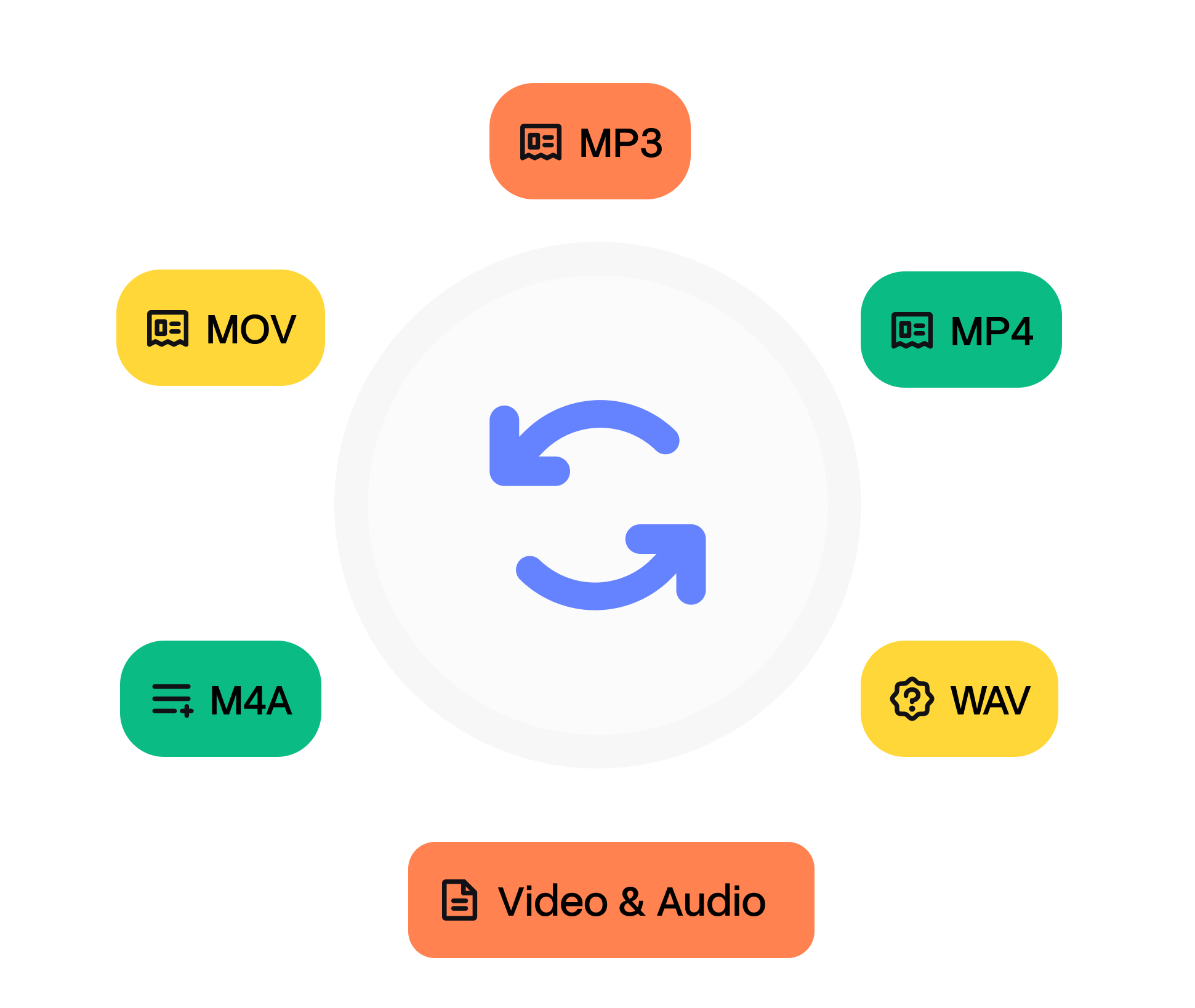1. Upload your FLV file
Start by dragging and dropping your FLV file into the upload area, or click to browse your device and select your file in the list.
Convert your FLV (.flv) file to MOV (.mov) in seconds straight from your browser. No installs. No watermarks. 100 % free.
Convert from FLV to MOV but also 47+ other formats.
No signups, no fees, no hidden restrictions. Convert FLV to MOV directly in your browser for free.
We take your security seriously. All file transfers use 256-bit SSL encryption.
No installs needed; convert FLV to MOV right from your browser, on any device, anytime.
Start by dragging and dropping your FLV file into the upload area, or click to browse your device and select your file in the list.
Next, pick MOV as the format you’d like to convert your video into. Alternatively, we support +47 formats that you can choose from. When you’re ready, hit the Convert button.
Once the conversion is complete, you’ll get a download link right away. Just click to save the file to your device. It’s fast, easy, and doesn’t require any software installation.

Flash Video (FLV) is a container that encapsulates Sorenson Spark, VP6, or H.264 video together with MP3/AAC audio and on‑screen data events for ActionScript. It became the backbone of early YouTube and news portals because the small header footprint yields quick progressive playback. Macromedia introduced FLV in 2002 with Flash Player 6, offering the first ubiquitous plug‑in‑based video experience on the Web. After Adobe’s acquisition, FLV evolved to support H.264 in 2007 but began losing ground once HTML5 <video> gained traction. By the end of 2020, Adobe disabled Flash, and most CDNs convert FLV archives to MP4 or HLS.
MOV is Apple’s QuickTime File Format (QTFF) container. It stores media and edit lists as separate atoms, enabling non‑linear jumps and reference movies that point to external assets. Although often associated with ProRes, it can wrap anything from PCM to HEVC. QuickTime debuted in 1991, pioneering desktop video at 160×120 pixels. The MOV container layered edit metadata timecode, clean aperture on top of raw tracks, influencing the later MP4 standard. Today .mov persists in DSLR and cinema cameras because the atom structure maps neatly to industry workflows.
Need to convert your audio file from FLV to MOV? It’s simple. Just upload your file, choose the output format, and click ‘Convert’. That’s it — no downloads, no complicated software, and no hidden costs. Our tool is designed to be fast, secure, and completely free, so you can turn your files into the format you need in seconds.
Whether you’re converting audio for sharing, editing, or playback on different devices, our converter ensures high-quality output every time. After your conversion, you’ll also have the option to transcribe video to text, making it easy to turn your MOV files into accurate, editable text in just a few clicks.
Desktop apps like VLC or MPC‑HC open FLV seamlessly. If you encounter a Spark‑encoded clip, convert using FFmpeg: `ffmpeg ‑i input.flv ‑c:v h264 output.mp4`. Web players no longer stream FLV, so upload sites recommend remuxing to MP4 or WebM.
QuickTime Player, Final Cut Pro, and Adobe Premiere read .mov natively. On Windows, install Apple ProRes or Grass Valley HQ codecs for professional footage. If compatibility is an issue, re‑wrap to MP4 with `ffmpeg ‑c copy input.mov output.mp4` (no recompression).
Other tools